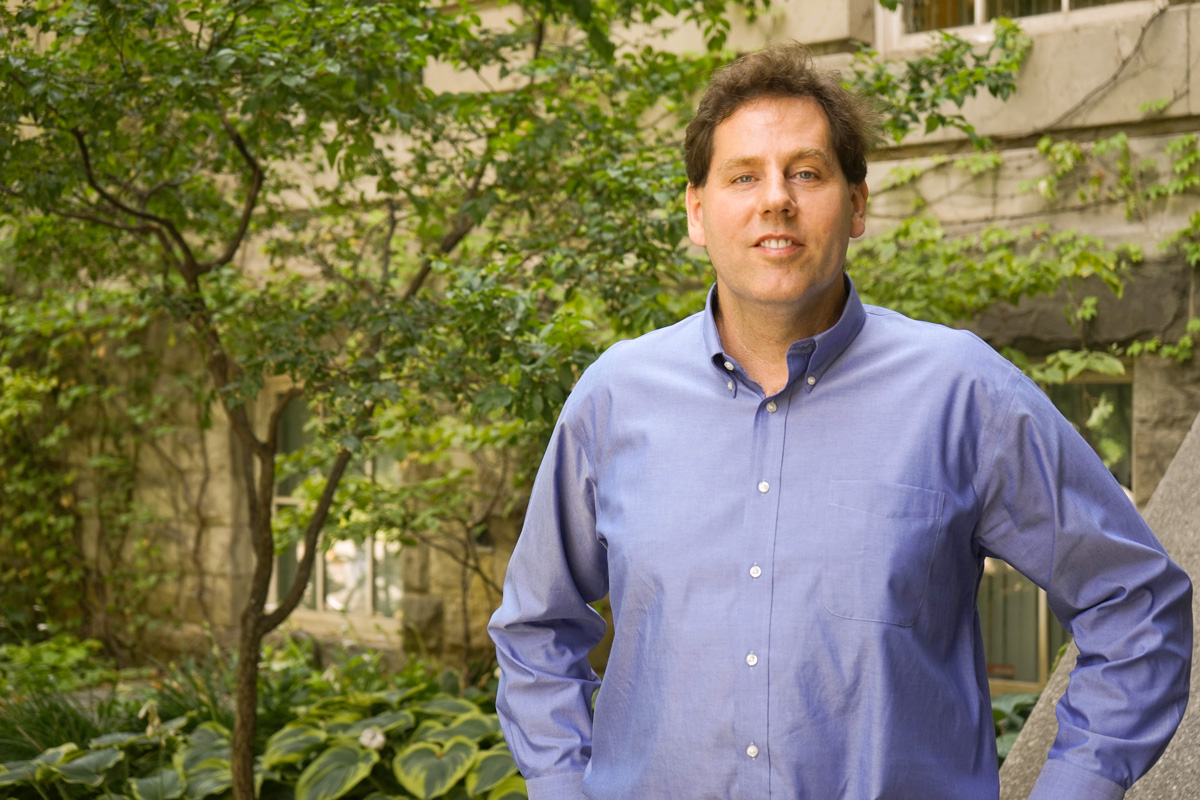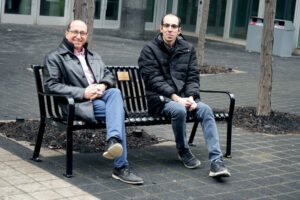
AUGUST 26, 2024 • By Matthew Tierney
For one year, Professor Vaughn Betz is returning to the industry where he made his mark.
Cerebras Systems, a leading computer systems company, has invited Betz to take on the position of Distinguished Visiting Professor in its Toronto offices.
Betz’s research history includes a focus on field-programmable gate arrays (known as FPGAs), computer-aided design algorithms and hardware acceleration of computation — needed expertise as AI and deep learning demand more and more power from computer and hardware systems. In 1998, Betz founded a startup to commercialize his research, and in 2000 it was purchased by a top semiconductor company, Altera Corporation. He remained in leadership positions within Altera for over a decade.
Betz sat down with ECE’s Matthew Tierney to talk about sabbaticals, Toronto as a tech hub, and the benefits to the department when professors engage with industry.
How do professors in engineering typically use their time away from faculty duties?
A sabbatical is chance to step back from what you’re doing day to day and try something different. For example, you could focus more intently on your ongoing research programs or join another university to take on other research projects, with the benefits that come from interacting with different people. You can also focus on teaching, and some of my colleagues go to another university to immerse themselves in their curriculum and learn different pedagogical approaches.
Sabbaticals occur with varying frequency, typically every seven years. My last sabbatical was in 2017.
You are joining the company Cerebras in its Toronto offices as a Distinguished Visiting Professor. What excites you about this opportunity?
This position gives me the freedom to embed myself in many aspects of company, to learn what they’re doing and collaborate on projects, some of which are similar to my own. My role will be to bring a different perspective — a new set of eyes and technical background — to the technology they’re building.
As an engineer and an academic, you have to constantly be thinking about how to stay at the leading edge of your field, about developing your breadth of skills. What’s new? What’s coming up? Cerebras is known for its wafer-scale chips, which are about 22 centimetres by 22 centimetres; I’m excited to better understand wafer-scale integration, and how their style of architecture can accelerate deep learning. Just reading their external materials would never bring me that level of understanding.
What is it about Toronto that draws companies in the area of programmable hardware and accelerators?
There are few places around the world with such a comprehensive talent base, I think, particularly in FPGAs, the “off-the-shelf” customizable chips around which I built my startup.
In many ways, I think this all started with my advisor, Professor Jonathan Rose. When he began his research, there was no FPGA industry in Canada and some funding agencies were a bit skeptical of whether there would be enough benefit to Canada. It’s a testament to his work, and to that of many collaborators at the University of Toronto and in industry, that no one would question the economic benefit this industry brings to Canada and Toronto today.
It started to gain momentum around the millennium. With my startup, for example, one of our clients at the time, Altera, acquired us to secure exclusive rights to the technology and tap into our talent pool. Other researchers like ECE professors Stephen Brown, Jason Anderson and Paul Chow have done innovative work in FPGAs and semiconductors, drawing the attention of companies like AMD, eFinix, Microchip Technology and QuickLogic, who all established presences here in Toronto.
Fast forward two decades, and we now have a flourishing FPGA industry! These FPGA companies recognize the valuable skill set our graduates possess. Our graduates grasp the concept of spatial computing, where computation and communication are distributed around the chip rather than centralized, to increase efficiency. They are trained to create complex computer-aided design software systems that make this hardware usable by design engineers.
A related strength of Toronto is compilers: IBM has a significant Toronto compiler lab, the FPGA companies also work on compilers, and several U of T professors are active researchers. Deep learning acceleration companies require all these skills, and they have begun to cluster in Toronto, including local startups Tenstorrent and Untether AI, and large offices of Silicon Valley companies like Groq and Cerebras.
What do you consider to be an ideal working relationship between academia and industry?
I wouldn’t prescribe a single correct way, but interaction between academia and industry is highly beneficial for both. There are multiple paths this relationship can take, from industry funding academic research to professors starting or joining companies. However, it’s also crucial to maintain a balance — to ensure that industry funding doesn’t become a prerequisite for all research, since pathfinding research may not have current industry applications.
This is where the government comes in with support, to ensure there’s room for independent research that may not yet interest industrial partners. Discovery grants in Canada provide some of this balance, encouraging significant industrial interaction while allowing for research without immediate industrial relevance.
In my opinion, the ideal balance fosters engagement without imposing constraints.
How does it benefit ECE to be in these industry leadership positions?
I think it benefits us by bringing industrially relevant concepts into our teaching, making sure our curriculum is aligned with what’s going on in the state of the art — not just in academic research, but also in cutting-edge industry.
For example, in an undergraduate course I that teach, we undertake a substantial software project related to transportation, such as optimizing travel and delivery routes in cities. I draw parallels between these tangible engineering problems and chip design issues, as well as challenges in social media networks. I’ve already started relating some of these to the Cerebras project and will delve deeper into this in my graduate-level course, incorporating it more thoroughly into the curriculum as I gain a deeper understanding of the technology.
It makes our teaching better. It makes our research better. Our students notice it as well as funding agencies. In short, it’s a hallmark of a strong school.


